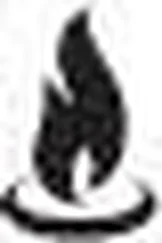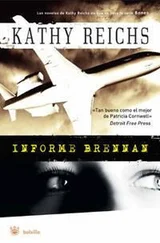Past the black girders of the pont Champlain, the skyscrapers of centre-ville cut sharp silhouettes against the early summer dusk. I recognized Place Ville-Marie, Complexe Desjardins, the Centre-Mont-Royal, the Marriott Château Champlain.
The streets I’d searched for parking spaces that morning were clogged with traffic. Parents returning to the burbs for dinner and homework with the kids, lovers hurrying to nocturnal trysts, night-shifters dragging themselves to punch clocks on which time would seem to stand still.
How often Ryan and I had driven together from Wilfrid-Derome, discussing victims, suspects, aspects of a case. I can’t share my work with those close to me who are not on the job—Pete, Katy, Harry, my best friend, Anne. I can’t tell them what I’ve seen lying in a Dumpster or buried in a shallow grave. Can’t describe the congealed blood, the bloated body, the seething maggots. I missed having someone to talk to, someone who understood. Ryan had kept me balanced. Kept me caring.
I wondered at Ryan’s current coolness. Yes, we’d always danced around emotion, kept our innermost feelings to ourselves. Even in the good times.
Yes, the slaughter of innocents outraged him. Women. Children. The elderly. I knew that. But this current moodiness seemed different. More than me. More than dead babies.
Whatever. He’d tell me when he was ready. Or not.
While changing into street clothes, I decided on dinner at home before heading to St. Mary’s.
And remembered.
“Damn.”
I detest grocery shopping. Irrational, but there it is. I’ll make any excuse to avoid the supermarket. Then I pay the price. Like tonight. I hadn’t bought food since arriving in Montreal two days earlier.
As I tossed my soiled scrubs into a biohazard bin, another thought heightened my melancholy.
When I’d departed Charlotte, Birdie had been recovering from a urinary tract infection. Knowing he hated air travel, and feeling the trip might compromise his wee bladder, I’d left him in Dixie. The cat offered no protest.
Frozen dinner. Alone.
As I walked up the corridor, my spirits went subterranean. I was considering take-out options when, through the window, I noticed a figure in my lab.
I froze. Then recognition.
Ryan. Jabbing digits on a cell phone.
At six-thirty? What the hell?
Ryan turned when I pushed through the door. Before I could speak, he cut me off. “We got her.”
“Amy Roberts et cet?”
Ryan nodded.
“And?”
“You won’t believe it.”

“HER REAL NAME IS ANNALIESE RUBEN. SHE WAS POPPED TWICE for prostitution, once in 2005, again in 2008. Both arrests were in Edmonton. First time she got probation. Second time she was a no-show for the court date.”
Ryan handed me three printouts.
The first was a response to the fingerprint search. Skipping the part about points of correspondence, I skimmed the physical descriptors. Annaliese Ruben had black hair, brown eyes, stood five feet tall, and weighed 195 pounds.
The second printout was a report on Ruben’s criminal history. The third provided her most recent mug shot, obtained using the fingerprint system number. Ruben’s thumbnail showed a woman with a moon face and dark tangled hair that badly needed grooming.
I handed back the sheets. “Might have an overactive thyroid.”
“Yeah?”
“The bulging eyeballs. Or it could be the lighting. Mug shots don’t bring out the best in folks.”
“Edmonton PD says the address Ruben provided after the second collar turned out to be an abandoned warehouse. They’ve had no contact with her since ’08, know nothing about her current whereabouts.”
Ryan pocketed his iPhone and hip-planted his hands. There was stiffness in his movements, tension in his shoulders and jaw. Familiar signs. This case had gotten to him.
But there was more. A hardness in Ryan’s eyes that I hadn’t seen before.
I wanted to ask if there was something wrong, to say I was here if he wanted to talk. I didn’t. Just waited.
“Are you familiar with Project KARE?” Ryan spelled out the acronym.
“Isn’t it an RCMP task force created to investigate deaths and disappearances of women in and around Edmonton? I understand there have been quite a few.”
“That’s an understatement. But yeah, essentially, you’re right. Their mandate is to collar the scumbags responsible for HRMP murders.”
“High-risk missing persons.”
“Yes.” Ryan was keeping his voice carefully modulated.
“Meaning those involved in prostitution and drugs.” I sensed where this was going.
“Yes.”
“Annaliese Ruben is on the Project KARE list,” I guessed.
“Since 2009.”
“Who reported her missing?”
“Another prossie.”
That surprised me. “Sex-trade workers usually steer clear of the cops.”
“No shit. But the hookers in Edmonton are totally freaked.”
“Wasn’t someone arrested for those killings?”
“Thomas Svekla. A real piece of work. Charged with two murders, convicted of one.” Ryan shook his head in disgust. “He’d stuffed his victim into a hockey bag and hauled her from High Level to Fort Saskatchewan.”
“At least they got him.”
“Word is there’s more than one perp responsible.”
“So a predator may still be out there.”
“Yeah. Predator or predators.”
Ryan’s eyes looked dark and troubled. And too intensely blue to be real.
“But if Annaliese Ruben gave birth in Saint-Hyacinthe last Sunday, obviously she’s alive,” I said.
“And murdering babies.”
“We don’t know that.”
“Who but the mother could kill three different newborns at three times? And why’d she go rabbit?”
“What’s your next move?”
“Run the mug shot past Ralph Trees. See if Annaliese Ruben is Amy Roberts/Alma Rogers/Alva Rodriguez.”
“Then?”
“Then find her ass and haul it to the bag.”
* * *
I went with pad thai from the Bangkok at Le Faubourg on rue Sainte-Catherine. The line was short and I was running late.
St. Mary’s Hospital started life in 1924 as a forty-five-bed affair in Shaughnessy House, now the Canadian Centre for Architecture. A decade later, operations moved from there to avenue Lacombe in the Côte-des-Neiges neighborhood, just over the mountain from centre-ville . Today the old girl is a multipavilion institution offering 316 patient beds and a staff active in teaching and research.
Le stationnement was a replay of twelve hours earlier. At eight-fifty a car finally pulled out on rue Jean-Brillant. I fired into the spot, grabbed my things, and bolted.
The area was surprisingly active for nine P.M. on a Tuesday. Cars filled the streets, and pedestrians chugged along the walks—shoppers clutching plastic grocery bags; hospital visitors, empty-handed, probably heading home; backpacked students from Université de Montréal or Collège Notre-Dame.
St. Mary’s is not one of Quebec’s architectural gems. The main building is a multilevel concrete and redbrick box with a castlelike tower jutting up at its center. I beelined to the entrance and pushed through the glass doors.
The lobby was mostly deserted. An old man sat with legs outstretched, chin on chest, snoring softly. A woman pushed a stroller in endless circles, looking exhausted. Two orderlies discussed a physician’s printed order, or a menu, or a recipe for lentil soup.
LaManche stood on the lobby’s far side by a bank of elevators. Pomier was beside him, string-handled bags hanging from his curled fingers. With them was a tall man in wire-rimmed glasses whom I assumed was Dr. Leclerc.
Читать дальше










